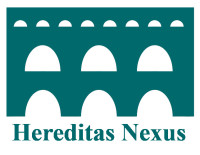 Reviewer: Wouter van Dijk
Reviewer: Wouter van DijkBritain, Ireland and the Crusades, c.1000-1300,
Kathryn HurlockPalgrave Macmillan, Basingstoke 2013
ISBN: 978 0 230 29864 4
Paperback, with list of abbreviations, chronology, maps, notes and selected bibliography
221 pages
€26,99 / £20,99
The Crusader movement in Britain and Ireland
The author Kathryn Hurlock is Lecturer in Medieval History at Manchester Metropolitan University and, for those interested in the crusades, perhaps already known as the author of Wales and the Crusades, c. 1095-1291 (2011). With this book on the crusader movement in Britain and Ireland she broadens her perspective. In six thematic chapters she discusses the role of Britain and Ireland in the crusades, and takes a look at the impact the crusading movement had on social, religious, cultural, and political life in England, Ireland, Scotland and Wales. Is she successful in doing so? The answer is yes, although a ‘yes, but’ is more appropriate, as will become clear below.
After the introduction of the subject, some historiographical remarks and a brief summary of the crusades and the concept of pilgrimage, Hurlock heads off to give a description of Britain and Ireland during the crusades in the first chapter. This leaves the very concept of a crusade and crusading itself barely treated, not unimportant since that is one of the vital concepts in the book. The author settles with a definition of an ‘armed pilgrimage’. Although the book certainly is based on a wealth of research, the bibliography unsurprisingly does show a lack in literature on this particular part. Whereas a work of Christopher Tyerman is mentioned, his Fighting for Christendom. Holy war and the crusades (Oxford 2005) could have brought some useful insights, as could have done the work What were the crusades? (Basingstoke 2009) by Jonathan Riley-Smith, who is missing completely from the list of sources.
The first chapter then, gives a brief overview of Scottish, Welsh, Irish and English history up to the eleventh century. Also, the implemented church reforms of the eleventh century are briefly treated. After that, chapters on recruitment and funding of the crusades and on participation in them follow, as well as chapters on politically initiated crusades, the domestic impact of crusading and the role of the Military Orders in the crusading movement. The dominant impression that comes to the fore when reading is that many aspects of the crusading movement were similar in Britain and Ireland, as they were in mainland Europe. This is true for the funding of the crusades, as British magnates had to mortgage estates or houses or had to lend money to fund their travels, as their continental counterparts had to do. Also, the collection of funds by raising, whether or not temporal, taxes and one-off levies are known from mainland Europe. The commuting of crusader vows for financial support is another example in this. Although the many ways of funding the crusades are explained well, there are scant comparisons made to the situations on the continent, which is in many cases similar. That way, the reader can’t place the British situation in perspective, which is a pity.
An emphasis is placed on the Third Crusade, because it was the first crusade in which British and Irish people participated on a large scale. These crowds consisted of both royal entourage under Richard I and the soldiers in their service, as well as noblemen that participated on their own initiative in the crusade with their following.
Further along in the book, the author gives some attention to the many interesting forms in which crusader rhetoric was used by both sides during the Barons’ Wars of the thirteenth century and the wars of Edward I in Ireland, Scotland and Wales. Also Hurlock’s treatment of the situation of women staying behind while their men went on crusade is noteworthy. One does not instantly realize that theirs was a very precarious situation. Often they were subject to intrusive men trying to get a hold of their estates now that their husbands were gone. Some were even forced to marry so their lands could be confiscated. The last chapter on the Military Orders brings together a lot of information about gifts to the orders in relation to crusader values. The survey of the property of both the Knights Templar and the Hospitallers is very interesting and in handling these orders’ developments, Hurlock helps to explain the power these institutions had in medieval British society.
This leads us to conclude that Kathryn Hurlock has brought to light some previously undervalued but interesting aspects of the crusader period in Britain and Ireland, but for the bigger part of the book it seems not much was different in the British situation to that of for example France, Germany or the Low Countries. This in itself is a legitimate result of the research done of course. Unfortunately, although Hurlock’s writing style is entertaining, the lack of some more analytical sections cannot be compensated entirely by the many anecdotes and personal stories woven into her narrative.
Wouter van Dijk
